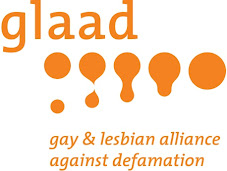 Sony's new Stanley Kramer Film Collection -- containing five films that he produced, two of which he also directed -- is examined by Dennis Liff in today's Los Angeles Times.
Sony's new Stanley Kramer Film Collection -- containing five films that he produced, two of which he also directed -- is examined by Dennis Liff in today's Los Angeles Times.
The filmmaker is best remembered for tackling important social issues, but Liff asserts that the Kramer-directed Guess Who's Coming to Dinner is condescending today.
Guess (which had its own 40th anniversary DVD release last year) is often mentioned alongside Brokeback Mountain as being a parallel social-justice film: Guess reflected the civil rights movement in 1967 as Brokeback reflected the gay rights movement in 2006.
"This self-important drawing-room comedy, in which a young white woman brings home Sidney Poitier to her chagrined liberal parents, has its adherents, but it seems more quaint and condescending with each passing year," writes Liff. "Kramer has said that the saintliness of Poitier's character -- a noble, well-off, multiply credentialed doctor -- was an attempt to undermine existing stereotypes. But he inadvertently created a new one: the model assimilationist hero, the non-threatening black character who set the benchmark for on-screen minorities for decades."
"Poitier's character is less a human being than a catalog of positive traits, and the film's genteel San Francisco setting, not to mention the terms of its to-marry-or-not discussions, are remarkably untouched by the fury and urgency of the period's civil rights struggle. In that light, the problem with Kramer's films wasn't that they constantly referred to social issues -- it's that they all too often retreated from the messier realities of those issues."After years of being represented as cartoon stereotypes in TV and film, gay characters began to take their own "assimilationist hero" route in the '90s with shows like Melrose Place, Ellen and
 Will & Grace. These programs moved gay characters into the mainstream but also created the new stereotype of the non-threatening white yuppie asexual gay character. It would take Queer as Folk and The L Word on cable, Brothers & Sisters (left) on ABC, and Brokeback Mountain on the big screen to show gay men and women as somewhat multi-dimensional sexual beings. Images of gay people of color continue to be few and far between, but Noah's Arc and the film Dirty Laundry have made some inroads in this area.
Will & Grace. These programs moved gay characters into the mainstream but also created the new stereotype of the non-threatening white yuppie asexual gay character. It would take Queer as Folk and The L Word on cable, Brothers & Sisters (left) on ABC, and Brokeback Mountain on the big screen to show gay men and women as somewhat multi-dimensional sexual beings. Images of gay people of color continue to be few and far between, but Noah's Arc and the film Dirty Laundry have made some inroads in this area.Bruce Kluger wrote a column for USA Today this week that points out that the entertainment industry has done what it can to assimilate gay characters into programming, but in so doing has left out the issues
"...this significant step forward carries with it a liability: As entertainment executives conscientiously work to bring the gay experience into the mainstream in a non-political way, they also run the risk of neglecting the real-life struggles gays continue to face."While Law & Order and According to Jim lampoon (or "rip from the headlines") a closeted gay politician tap-dancing in a bathroom stall, headlines of real importance to the LGBT community are often left out. Stories of a non-inclusive ENDA, "Don't Ask, Dont' Tell" or an anti-gay ballot amendment in Florida could seriously add to the discussion -- and to change.
To paraphrase the L.A. Times' Liff, we need the entertainment industry to tell some of the "messier realities" of our lives. The impending end of the writers' strike may bring some added visibility, but the real problem continues to be a lack of characters and shows which feature LGBT characters who can even tell these stories.

No comments:
Post a Comment